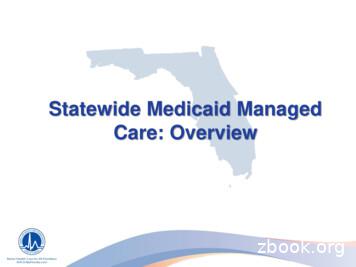TABLE 2-8 SPECIFIC PLANS, GENERAL PLAN UPDATES, AND
Draft Peninsula Corridor Electrification Project Transportation Impact AnalysisFebruary 2014TABLE 2-8SPECIFIC PLANS, GENERAL PLAN UPDATES, AND OTHER RECENT PLANNING STUDIES IN THESTUDY AREA (2000 – 2013)LeadJurisdiction/AgencyProject/StudyRedwood CityGeneral PlanCity of Redwood CityMenlo Park GeneralPlan ElementAmendmentsCity of Menlo ParkPalo AltoComprehensive PlanCity of Palo AltoMountain View2030 General PlanCity of MountainViewSunnyvale GeneralPlan Land Use andTransportationElementCity of SunnyvaleCountyStatus ofProject/StudyRelevancy to PCEPSan MateoAdopted, 2010Plan prioritizes additionalgrade separations forimproved traffic flow andencourage TOD around andimproved transit connectivityat the Redwood City StationSan MateoAdopted, 2013; Newprocess expected tobegin in 2014Circulation Plan encouragesincreased service andridership at Menlo ParkStationAdopted, 2007Plan supports PCEP andenhanced pedestriancirculation at the Palo AltoStationSanta ClaraAdopted, 2012Plan encourages coordinationwith Caltrain to improveservice at Mountain ViewStationSanta ClaraCurrently inprogressOngoing study of land useand transportationimprovement near SunnyvaleStationSanta ClaraSanta Clara GeneralPlan Update 20102035City of Santa ClaraSanta ClaraAdopted, 2010Plan encourages TOD andimproved multi-modalconnectivity near Santa ClaraStation, as well as supportsupgraded Caltrain facilitiesand servicesEnvision San Jose2040City of San JoseSanta ClaraAdopted, 2011Plan encourages newdevelopment around San JoseDiridon StationMASTER PLANS, LONG-, AND SHORT-RANGE TRANSPORTATION PLANSSFMTA StrategicPlan FY 2013-2018SFMTASan FranciscoAdopted, 2012Strategic Plan discussesSFMTA coordination withother regional transitproviders, including CaltrainSan FranciscoTransportation Plan2040SFCTASan FranciscoAdopted, 2013PCEP identified as a efficiencyand enhancement project inthe Strategic PlanAdopted, 2009Plan identifies SamTransannual funding contributionto JPB for operation ofCaltrainSamTrans ShortRange Transit PlanFY 2008-2018SamTransSan Mateo52
Draft Peninsula Corridor Electrification Project Transportation Impact AnalysisFebruary 2014TABLE 2-8SPECIFIC PLANS, GENERAL PLAN UPDATES, AND OTHER RECENT PLANNING STUDIES IN THESTUDY AREA (2000 – eTransportation Plan(2000)City/CountyAssociation ofGovernments of SanMateo County(C/CAG)El Camino RealMaster PlanningStudyValleyTransportation Plan20352.4.7City of Palo AltoVTACountyStatus ofProject/StudyRelevancy to PCEPAdopted, 2001;update underwayUpdate on county-wide multimodal transportation policies,including Caltrain stations inSan Mateo CountySanta ClaraCurrently inprogressOngoing study to improvemulti-modal transportationon El Camino Real nearCalifornia Avenue StationSanta ClaraAdopted, 2009;update underwayUpdate on VTA service andpolicies including VTA routesthat connect to CaltrainStations in Santa Clara CountySan MateoSTATE AND REGIONAL REGULATORY FRAMEWORKThis project also falls within the purview of some key state and regional long range transportation plans.This section describes the regulatory framework of these plans, including the status of implementation, assome of the plans are still in progress and not yet fully adopted.2.4.7.1California Transportation Plan 2030The California Transportation Plan (CTP) 2025 was adopted in 2006 and updated in 2007. The Plan,overseen by the California Department of Transportation (Caltrans), serves as a blueprint for California’stransportation system defined by goals, policies, and strategies to meet the State’s future mobility needs.The goals defined in the plan fall into three categories: social equity, prosperous economy, and qualityenvironment. Each goal is tied to performance measures. In turn, members from regional andmetropolitan planning agencies report to Caltrans these performance measures (State of California, 2007).The CTP 2030 Addendum updated the CTP 2025, to comply with the Safe, Accountable, Flexible, Efficient,Transportation Equity Act – A Legacy for Users (SAFETEA-LU). This federal law authorized transportationfunding through 2009 and established new requirements for statewide and metropolitan transportationplanning. Caltrans is presently working on an update of the CTP that would extend to 2040.2.4.7.2Plan Bay AreaPlan Bay Area is the San Francisco Bay Area’s plan to meet the requirements of Senate Bill 375,Sustainable Communities, signed into law in 2008. Sustainable Communities requires each of the State’MPOs to develop a Sustainable Communities Strategy (SCS) aimed at reducing greenhouse gas emissionsfrom passenger vehicles. The law also requires the California Air Resources Board (ARB) develops Regionalgreenhouse gas emissions targets for 2020 and 2035. ARB also reviews each final SSC to determinewhether the plan would, if implemented, achieve the set greenhouse gas emission targets (MTC, 2013).53
Draft Peninsula Corridor Electrification Project Transportation Impact AnalysisFebruary 2014Plan Bay Area is overseen by the MTC and the Association of Bay Area Governments (ABAG). It serves asthe region’s SCS and the 2040 Regional Transportation Plan (preceded by Transportation 2035),integrating transportation and land-use strategy to manage greenhouse gas emissions and plan for futurepopulation growth. The Regional Transportation Plan and SCS includes policies that call for shifting moretravel demand to transit and accommodating growth along transit corridors in “Priority DevelopmentAreas.” In July of 2013, Plan Bay Area was adopted by ABAG and the MTC. The Proposed Project is one ofthe major projects included in Plan Bay Area.54
Draft Peninsula Corridor Electrification Project Transportation Impact AnalysisFebruary 20142.5EXISTING BICYCLE AND PEDESTRIAN CONDITIONSThe existing pedestrian infrastructure surrounding Caltrain stations in the Study Area provides a goodlevel of accessibility, considering the varied mix of land uses around stations. In general, bicycle facilitieswithin the Study Area are characterized by a network of mostly continuous routes within about one-mileof stations. Demand for such facilities is relatively high due to the popularity of Caltrain’s bicycle accessprogram, described in more detail in Section 2.5.1.2.5.1BICYCLE FACILITIES AND PLANNED BICYCLE IMPROVEMENTSThe majority of Caltrain cyclists bring their bikes on-board the train rather than parking their bike at aCaltrain station. Of the 14 percent of Caltrain passengers who access stations via bicycle, about 13 percentbring their bicycles on-board, while about one percent of passengers park their bicycles at their originstation (Fehr & Peers, 2013). In 2013, a total of 4,900 bicycles board daily, almost equally split betweennorthbound and southbound trains (50 percent of all daily bicycles trips head northbound, 49 percenthead south) (JPB, 2013). As discussed in Section 2.1.3, walking is the most commonly used mode of accessto Caltrain stations. About 36 percent of Caltrain passengers access Caltrain stations by walking.2.5.1.1Bikeway Facilities Connected to Caltrain StationsBicycle facilities are classified based on a standard typology, described in further detail below: Class I Bikeway (Bikeway Path): A completely separate right-of-way designated for the exclusiveuse of bicycles and pedestrians, with vehicle and pedestrian cross-flows minimized. Class II Bikeway (Bikeway Lane): A restricted right-of-way designated for the use of bicycles, with astriped lane on a street or highway. Bicycle lanes are generally five feet wide. Vehicle parking andvehicle and pedestrian cross-flows are permitted. Class III Bikeway (Bikeway Route): A right-of-way designated by signs or pavement markings forshared use with pedestrians or motor vehicles.Most, but not all Caltrain stations are connected to the surroundi
Figure 2-21. Major Class I bikeways in the include the Guadalupe River Trail, Bay Trail, Los Study Area Gatos Creek Trail, and the Coyote Creek Trail. The Guadalupe Trail, Los Gatos Creek Trail, and Coyote Creek Trail are located in Santa Clara County. The San Francis
Tax-Preferred College Savings Plans: An Introduction to 529 Plans Congressional Research Service 2 Types of 529 Plans: Prepaid and Savings Plans There are two types of 529 plans: "prepaid" plans and "savings" plans. A 529 prepaid plan allows a contributor (i.e., a parent, grandparent, or non-relative) to make lump-sum or periodic payments
Grade (9-1) _ 58 (Total for question 1 is 4 marks) 2. Write ̇8̇ as a fraction in its simplest form. . 90. 15 blank Find the fraction, in its
Plans from CheapSheds.com Single slope lean to style shed plans with porch in 45 sizes Deluxe gable roof shed plans with loft in 31 sizes Tall barn style shed plans with loft in 31 sizes Gable roof shed plans in 21 sizes Compact vertical bike shed plan How To Build a 1-2-3 Car Garage, Garage Plans How To Start A Business e-Book All
C opy righ t(c) 2 09 b yR eE. d All Right sR erv d Book Shelf Plans Attach F ac er m Page 12 Step 2. Secure it to the sides with 1 1/2" finishing nails asFile Size: 824KBPage Count: 19Explore further16 Free DIY Bookshelf Plans You Can Build Right Nowwww.thesprucecrafts.com57 DIY Free Bookshelf Plans Learn How To Build A .homesthetics.netDIY Bookshelf Plans BLACK DECKERwww.blackanddecker.com40 Easy DIY Bookshelf Plans Guide Patternswww.guidepatterns.comBookcase Plan Combo Pack - Popular Woodworkingcdn.popularwoodworking.comRecommended to you b
Access to Care When you Need it: Double the primary care providers in each . Comprehensive Plans Long-Term Care Plus Plans Managed Medical Assistance Plans Specialty Plans Dental Plans * Plans awarded an MMA contract through settlement; however will operate as comprehensive plans pursuant to the terms of the settlement. 28. 29.
Home equity conversion plans can broadly be divided into loan plans and split equity plans. In the loan plans, the aged homeowner accumulates a debt to be paid off at some future time. In the split equity plans, the aged person sells the house and the equity is split into owner- ship rights that belong to the buyer-investor and occu- .
PEHP Medicare Supplement Plans » Three supplement plans that cover 100%, 75%, or 50% after what Medicare pays. » All medical plans provide coverage options nationwide or outside the U.S. » Three pharmacy plans to help cover your prescriptions. » Three dental plans to choose from. » Four vision plans, covering eyewear and/or exams at various retailers.
Medicare Supplement Plans A, C, F, G, K, L, and N Rates effective Jan. 1, 2022 MI_MSO_2006. 1Plans F and G also have high deductible options which require first paying the plans' deductibles of 2,370 before the plans begin to pay. Once the plans' deductibles are met, the plans pay 100% of covered services























